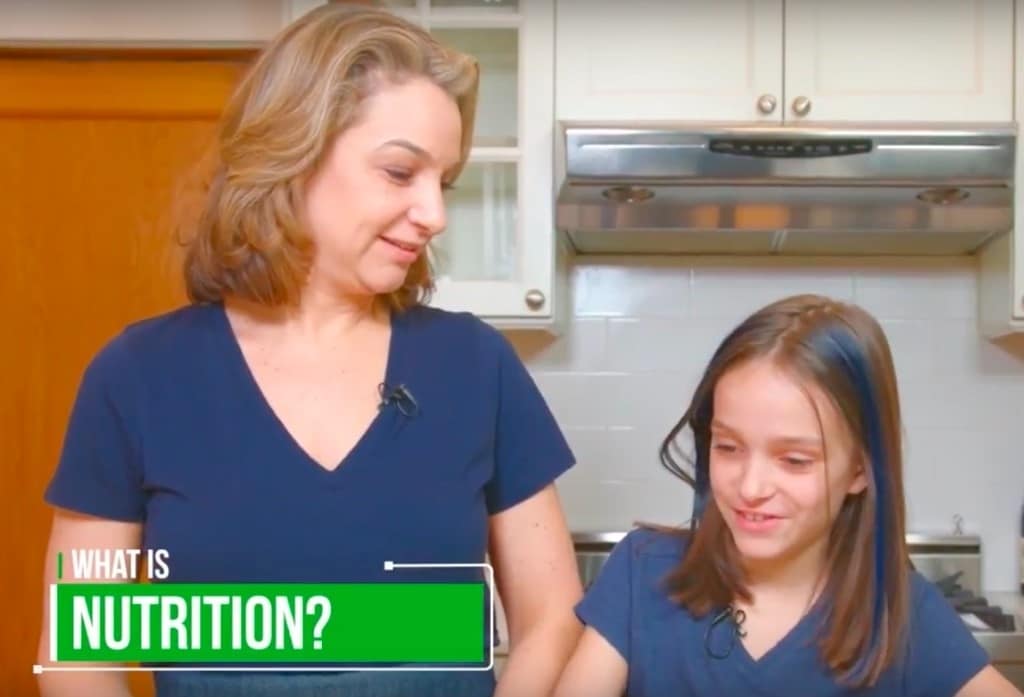4. Merril D, Siddarth P, Raji C, et al: Modifiable risk factors and brain positron emission tomography measures of amyloid and tau in nondemented adults with memory complaints. American Journal of Geriatric Psychiatry 2016; August 17th.
5. Du H, Li L, Bennett D, et al: Fresh fruit consumption and major cardiovascular disease in China. New England Journal of Medicine 2016;374:1332-1343.
6. Buil-Cosiales P, Toledo E, Salas-Salvado J, et al: Association between dietary fibre intake and fruit, vegetable, or whole grain consumption and the risk of CVD. British Journal of Nutrition 2016; June 6:1-13.
7. Song M, Hu F, Wu K, et al: Trajectory of body shape in early and middle life and all cause and cause specific mortality. British Medical Journal 2016; May 4th.
8. Aune D, Sen A, Prasad M, et al: BMI and all cause mortality. British Medical Journal 2016; May 4th.
9. Kraschnewski J, Sciamanna C, Poger J, et al: Is strength training associated with mortality benefits? Preventive Medicine 2016; 87:121-127.
10. Gopinath B, Flood V, Kifley A, et al: Association between carbohydrate nutrition and successful aging over 10 years. Journal of Gerontology 2016;June 1st.
11. Hagan K, Chiuve S, Stampfer M, et al: Greater adherence to the Alternative Healthy Eating Index is associated with lower incidence of physical function impairment in the Nurses Health Study. Journal of Nutrition 2016;146:1341-1347.
12. DelGobbo L, Imamura F, Aslibekyan S, et al: Omega-3 polyunsaturated fatty acid biomarkers and coronary heart disease. JAMA Internal Medicine 2016;June 27th.
13. Wang D, Li Y, Chiuve S, et al: Association of specific dietary fats with total and cause-specific mortality. JAMA Internal Medicine 2016;July 5th.
14. Feigin V, Roth G, Naghavi M, et al: Global burden of stroke and risk factors in 188 countries, during 1990-2013. Lancet Neurology 2016;June 9th.
15. Loprinzi P, Branscum A, Hanks J, et al: Healthy lifestyle characteristics and their joint association with cardiovascular disease biomarkers in US adults. Mayo Clinic Proceedings 2016;91:432-442.
16. Marklund M, Leander K, Vikstrom M, et al: Polyunsaturated fat intake estimated by circulating biomarkers and risk of cardiovascular disease and all-cause mortality in a population-based cohort of 60-year-old men and women. Circulation 2016;132:586-594.
17. Silvan J, Requero M, de Pascual-Teresa S: A protective effect of anthocyanins and xanthophylls on UVB-induced damage in retinal pigment epithelial cells. Food & Function 2016; 7:1067-1076.
18. Alassane S, Binquet C, Cottet V, et al: Relationships of macular pigment optical density with plasma lutein, zeaxanthin, and diet in an elderly population. Investigative Ophthalmology and Vision Science 2016;57:1160-1167.
19. McCusker M, Durrani K, Payette M, et al: The role of vitamins, essential fatty acids, and antioxidants in age-related macular degeneration, dry eye syndrome, and cataracts. Clinical Dermatology 2016; 34:276-285.
20. Gatell-Tortajada J: Oral supplementation with a nutraceutical formulation containing omega-3 fatty acids, vitamins, minerals, and antioxidants in a large series of patients with dry eye symptoms. Clinical Intervention in Aging 2016;11:571-578.
21. Rautiainen S, Rist P, Glynn R, et al: Multivitamin use ant the risk of cardiovascular disease in men. The Journal of Nutrition 2016; 146:1235-1240.
22. Stefani E, Boffetta P, Ronco A, et al: Meat consumption, related nutrients, obesity and risk of prostate cancer. Asian Pacific Journal of Cancer Prevention 2016;17:1937-1945.
23. Pfisterer K, Sharratt M, Heckman G, et al: Vitamin B12 status in older adults living in Ontario long-term care homes. Applied Physiology, Nutrition, and Metabolism 2016; January 19th.
24. Gardener H, Wright C, Dong C, et al: Ideal cardiovascular health and cognitive aging in Northern Manhattan Study. Journal of the American Heart Association 2016; March 16th.
25. Steffener J, Habeck C, O Shea D, et al: Differences between chronological and brain age are related to education and self-reported physical activity. Neurobiology and Aging 2016; 40:138-144.
26. Raji C, Merrill D, Eyre H, et al: Longitudinal relationships between caloric expenditure and gray matter in the Cardiovascular Health Study. Journal of Alzheimer s Disease 2016: March 11th.
27. Morris M, Brockman J, Schneider J, et al: Association of seafood consumption, brain mercury level, and APOE e4 status with brain neuropathology in older adults. Journal of the American Medical Association 2016; 315:489-497.
28. Heras-Sandoval D, Pedrraza-Chaverri J, Perez-Rojas J: Role of docosahexaenoic acid in the modulation of glial cells in Alzheimer s disease. Journal of Neuroinflammation 2016; March 10th.
29. Nishihira J, Tokashiki T, Higashiuesato Y, et al: Associations between serum omega-3 fatty acid levels and cognitive functions among community-dwelling octogenarians in Okinawa, Japan. Journal of Alzheimers Disease 2016; February 16th.
30. Soutif-Veillon A, Ferland G, Rolland Y, et al: Increased dietary vitamin K intake is associated with less severe subjective memory complaint among older adults. Maturitas 2016; February 11th.
31. Schafer M, White T, Evans G, et al: Exercise prevents diet-induced cellular senescence in adipose tissue. Diabetes 2016; March 16th
32. Zhang Y, Chen J, Qiu J, et al: Intakes of fish and PUFAs and mild-to-severe cognitive impairment risks. American Journal of Clinical Nutrition 2015; December 30th.
33. Oulhaj A, Herneren F, Refsum H, et al: Omega-3 fatty acid status enhances the prevention of cognitive decline by B vitamins in mild cognitive impairment. Journal of Alzheimer s Disease 2016; January 6th.
34. Wu J, Cho E, Willett W, et al: Intakes of lutein, zeaxanthin, and other carotenoids and age-related macular degeneration during 2 decades of prospective follow-up. JAMA Ophthalmology 2015; October 8th.
35. Gu Y, Brickman A, Stern Y, et al: Mediterranean diet and brain structure in a multiethnic elderly cohort. Neurology 2015; October 21st.
36. Sahakyan k, Somers V, Rodriquez-Escudero J, et al: Normal-weight central obesity. Annals of Internal Medicine 2015; November 10th.
37. Bernstein P, Li B, Vachali P, et al: Lutein, zeaxanthin, and meso-zeaxanthin: The basic and clinical science underlying carotenoid-based nutritional interventions against ocular disease. Progress in Retinal and Eye Research 2015; November 2nd.
38. Montagnani M, Marzagalli M, Moretti R, et al: Vitamin E alpha tocotriene triggers endoplasmic reticulum stress-mediated apoptosis in human melanoma cells. Science Report 2016;July 27th.
39. Chuang Y, An Y, Bilget M, et al: Midlife adiposity predicts earlier onset of Alzheimer s dementia, neuropathology and presymptomatic cerebral amyloid accumulation. Molecular Psychiatry 2015; September 1st.
40. Xu W, Tan L, Wang H, et al: Meta-analysis of modifiable risk factors for Alzheimer s disease. Journal of Neurology, Neurosurgery & Psychiatry 2015;August 21, 2015.
41. Mohajeri M, Troesch B, Weber P: Inadequate supply of vitamins and DHA in elderly: Implications for brain aging and Alzheimer-type dementia. Nutrition 2015;31:261-275.
42. Huang T, Xu M, Lee A, et al: Consumption of whole grains and cereal fiber and total and cause-specific mortality. BMC Medicine 2015;13:59.
43. Berti V, Murray J, Davies M, et al: Nutrient patterns and brain biomarkers of Alzheimer s disease in cognitively normal individuals. Journal of Nutrition, Health & Aging 2015;19;:413-423.
44. Crous-Bou M, Fung T, Prescott J, et al: Mediterranean diet and telomere length in Nurses Health Study. British Medical Journal 2014;December 2nd.
45. Freitas-Simoes T, Ros E, Sala-Vila A: Nutrients, foods, dietary patterns and telomere length. Metabolism 2016; 65:406-415.
46. Kandola K, Bowman A, Birch-Machin M: Oxidative stress: A key emerging impact factor in health, ageing, lifestyle and aesthetics. International Journal of Cosmetic Science 2016;37:1-8.
47. Rimbach G, Minihane A, Majewicz J, et al: Regulation of cell signaling by vitamin E. Proceedings of the Nutrition Society 2002;61:415-425.
48. Schagen S, Zampeli V, Makrantonaki E, et al: Discovering the link between nutrition and skin aging. Dermatoendocrinology 2012;4:298-307.
49. Nomellini V, Gomez C, Kovacs E: Aging and impairment of innate immunity. Contributions to Microbiology 2008 15:188-205.
50. Gallagher J: Vitamin D and aging. Endocrinology and Metabolism Clinics in North America 2013;42:319-332.
51. Veldurthy V, Wei R, Oz, et al: Vitamin D, calcium homeostasis and aging. Bone Research 2016;October 18th.
52. Wacker M, Holick M: Sunlight and vitamin D. Dermatoendocrinology 2013;5:51-108.
53. Allen L: How common is vitamin B12 deficiency? American Journal of Clinical Nutrition 2009;89:693S-696S.
54. Astrup A: How to maintain a healthy body weight. International Journal of Vitamin and Nutrition Research 2006;76:208-215.










